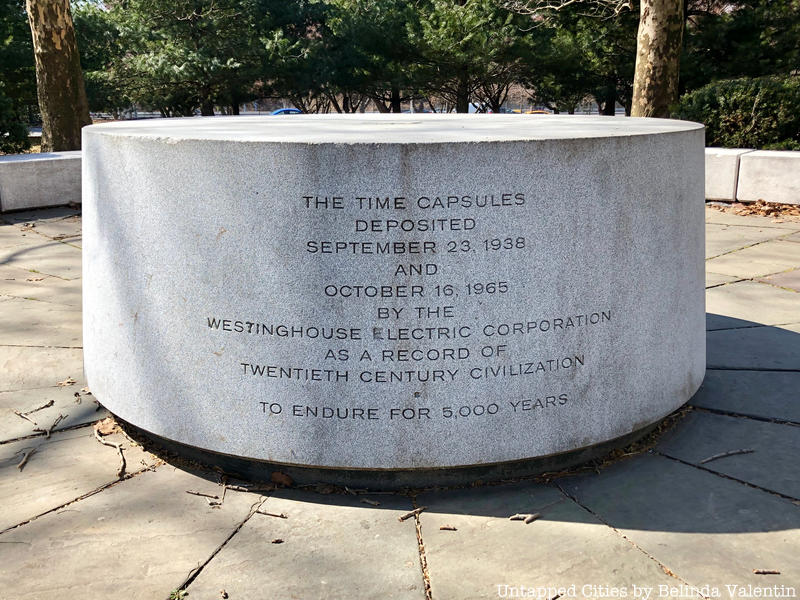 Photo via Wikipedia Commons, The Story of the Westinghouse Time Capsule
Photo via Wikipedia Commons, The Story of the Westinghouse Time Capsule
All across New York City, vestiges of the past can be found: some are hidden in plain sight or placed on public display, while others are buried way beneath the ground. Here we take a look at 12 unique time capsule that have been unearthed over the years.
From the Westinghouse Time Capsules (to be excavated in 6939) to one of the oldest known time capsules, these artifacts of an earlier time help us to understand what the city was like in the past. Additionally, this list includes newer capsules that were recently buried, which will provide future New Yorkers with a glimpse into our current way of life:
12. Westinghouse Time Capsules, Flushing Meadows

Created by Westinghouse Electric & Manufacturing Company for the 1939-1940 World’s Fair, the first of two “time capsules” in Flushing Meadows-Corona Park was considered an engineering and scientific feat. Though certainly not the first collection of items curated to be saved for posterity, the World’s Fair time capsule was the first to be named as such. Engineers used the most advanced technology available at the time to make the capsule as durable as possible. The artifacts are encased in a seven foot tall, 800 pound metallic cylinder shell made out of a state-of-the-art metal alloy of copper and chromium, called Cupaloy. This alloy is highly resistant to corrosion and engineers believed that it would withstand the forces of nature for 5000 years.
Buried along with the capsule is a pamphlet with specific instructions on how to find it. The creators took into account the loss of constructed landmarks, the failure of geo-political systems, and even shifts in the earth’s poles that would render coordinates useless. In any of these cases, as per pamphlet instructions, future generations can use the stars and alignment of the planets to find the capsule.
In the year 6939, whoever recovers the capsule will be rewarded with artifacts that would have been found in a typical 1930s home. Some of the thirty-five items enclosed are copies of Life magazine, a Sears Roebuck catalog, cigarettes and seeds of wheat, corn, alfalfa and soy.
 Photo from Wikipedia Commons, Austin Hall
Photo from Wikipedia Commons, Austin Hall
On October 10, 1965 a second capsule containing items that represented the current state of home life, science, space exploration, atomic energy, and art, was buried alongside the 1939 capsule to commemorate the 1964-1965 World’s Fair. Items in the 1964 version include credit cards, contact lenses, an electric toothbrush, antibiotics, synthetic fiber, and of course, a Beatles record.





